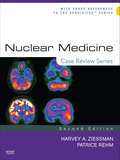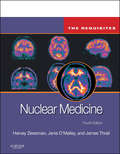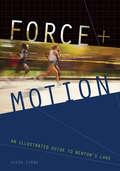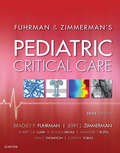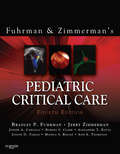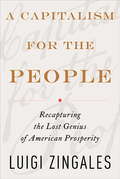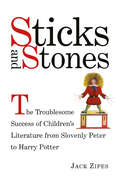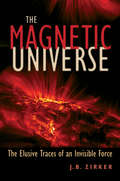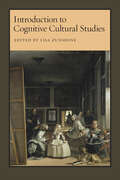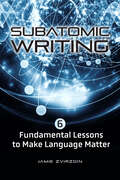- Table View
- List View
Nuclear Medicine: Nuclear Medicine (Case Review #No. 2)
by Harvey A. ZiessmanThis new edition of Nuclear Medicine in the popular Case Review series offers self-assessment preparation for board reviews to help residents and recertifying radiologists stay on top in their field! Dr. Harvey Zeissman presents 200 case studies—covering hot topics like PET/CT, SPECT/CT, and radiation safety—with images and questions to refine and reinforce your understanding of nuclear medicine.Review 200 cases organized by level of difficulty, with questions, answers, and rationales that mimic the format of certification exams. Prepare for the challenges you’ll face on the exam and in practice with visual guidance from 400 images. Find more in-depth information easily thanks to cross-references to The Requisites: Nuclear Medicine. Stay current thanks to new images and/or updated questions, answers, and discussions for nearly every case study. Master the applications of nuclear medicine in bone medicine, oncology, neurology, and cardiac medicine with 40 new PET/CT cases and 5 new SPECT/CT cases. Manage risks thanks to 10 radiation safety cases that cover this major concern in nuclear medicine practice. The perfect Review text for up to date high quality cases relevant to all the nuclear medicine topics on the boards
Nuclear Medicine: The Requisites (Requisites in Radiology)
by Harvey A. Ziessman Janis P. O'MalleyGet the essential tools you need to make an accurate diagnosis with Nuclear Medicine: The Requisites! The newest edition of his bestselling volume by Drs. Harvey Ziessman, Janis O'Malley, and James Thrall delivers the conceptual, factual, and interpretive information you need for effective clinical practice in nuclear medicine imaging, as well as for certification and recertification review.Prepare for the written board exam and for clinical practice with critical information on nuclear medicine physics, detection and instrumentation, SPECT and PET imaging, and clinical nuclear medicine imaging.
Force and Motion: An Illustrated Guide to Newton's Laws
by Jason ZimbaIsaac Newton developed three laws of motion that govern the everyday world. These laws are usually presented in purely mathematical forms, but Jason Zimba breaks with tradition and treats them visually. This unique approach allows students to appreciate the conceptual underpinnings of each law before moving on to qualitative descriptions of motion and, finally, to the equations and their solutions.Zimba has organized the book into seventeen brief and well-sequenced lessons, which focus on simple, manageable topics and delve into areas that often cause students to stumble. Each lesson is followed by a set of original problems that have been student-tested and refined over twenty years. Zimba illustrates the laws with more than 350 diagrams, an innovative presentation that offers a fresh way to teach the fundamentals in introductory physics, mechanics, and kinematics courses.
Pediatric Critical Care E-Book: Expert Consult Premium Edition - Enhanced Online Features And Print
by Jerry J. ZimmermanStill the #1 resource for today’s pediatric ICU teams, Pediatric Critical Care, 5th Edition covers the entire field, from basic science to cutting-edge clinical applications. Drs. Bradley P. Fuhrman and Jerry J. Zimmerman, accompanied by an expert team of editors and contributors from around the world, bring you today’s best information on the current and future landscape of pediatric critical care so you can consistently deliver optimum care to your young patients.Boasts highly readable, concise chapters with hundreds of useful photos, diagrams, algorithms, and clinical pearls.Clear, logical, organ-system approach allows you to focus on the development, function, and treatment of a wide range of disease entities.Includes new content on the expanding use of ultrasound at the bedside and the increase in nursing responsibilities in the PICU.Eighteen new chapters cover topics such as delirium, metabolism, endocrinology, nutrition, nursing, and much more.Features expanded and updated information on critical communication, professionalism, long-term outcomes, palliative care, ultrasonography, PCCM in resource-limited settings, ventilator-induced lung injury, non-invasive ventilation, updated CNS pathophysiology, the ‘Erythron’, and immunity and infection.
Pediatric Critical Care E-Book: Expert Consult Premium Edition - Enhanced Online Features And Print
by Jerry J. Zimmerman Bradley P. FuhrmanProvide the latest in superior quality care for critically ill children with the full-color, updated 4th Edition of Fuhrman and Zimmerman’s Pediatric Critical Care. In print, and now online, Drs. Bradley P. Fuhrman and Jerry J. Zimmerman use a comprehensive, organ-systems approach to help you manage a full range of disease entities. Get up-to-the-minute knowledge of topics such as acute lung injury, multiple organ dysfunction syndrome, and more. Implement new clinical techniques and diagnostic tests, weigh the varying perspectives of six associate editors with expertise in the field, reference 1,000+ illustrations to aid diagnosis, and keep sharp with online access to board-style review questions. This definitive title will ensure that you consistently deliver the very best intensive care to your pediatric patients.Focus on the development, function, and treatment of a wide range of disease entities with the text’s clear, logical, organ-system approach. Keep all members of the pediatric ICU team up to date with coverage of topics particularly relevant to their responsibilities. Keep current with the latest developments in palliative care, mass casualty/epidemic disease, acute respiratory failure, non-invasive ventilation, neurocritical care, neuroimaging, hypoxic-ischemic encephalopathy, stroke and intracerebral hemorrhage, systemic inflammatory response syndrome, acute lung injury, multiple organ dysfunction syndrome, and much more. Quickly find the information you need with sections newly reorganized for easier access. Gain the perspectives of six expert associate editors on all the new developments in the field. Understand complex concepts quickly and conclusively with a brand new full-color format and more than 1,000 illustrations. Search the full text, download the image library, and access online board review questions targeting every relevant topic, all at www.expertconsult.com.
A Capitalism for the People: Recapturing the Lost Genius of American Prosperity
by Luigi ZingalesBorn in Italy, University of Chicago economist Luigi Zingales witnessed firsthand the consequences of high inflation and unemployment-paired with rampant nepotism and cronyism-on a country's economy. This experience profoundly shaped his professional interests, and in 1988 he arrived in the United States, armed with a political passion and the belief that economists should not merely interpret the world, but should change it for the better.In A Capitalism for the People, Zingales makes a forceful, philosophical, and at times personal argument that the roots of American capitalism are dying, and that the result is a drift toward the more corrupt systems found throughout Europe and much of the rest of the world. American capitalism, according to Zingales, grew in a unique incubator that provided it with a distinct flavor of competitiveness, a meritocratic nature that fostered trust in markets and a faith in mobility. Lately, however, that trust has been eroded by a betrayal of our pro-business elites, whose lobbying has come to dictate the market rather than be subject to it, and this betrayal has taken place with the complicity of our intellectual class.Because of this trend, much of the country is questioning-often with great anger-whether the system that has for so long buoyed their hopes has now betrayed them once and for all. What we are left with is either anti-market pitchfork populism or pro-business technocratic insularity. Neither of these options presents a way to preserve what the author calls "the lighthouse” of American capitalism. Zingales argues that the way forward is pro-market populism, a fostering of truly free and open competition for the good of the people-not for the good of big business.Drawing on the historical record of American populism at the turn of the twentieth century, Zingales illustrates how our current circumstances aren't all that different. People in the middle and at the bottom are getting squeezed, while people at the top are only growing richer. The solutions now, as then, are reforms to economic policy that level the playing field. Reforms that may be anti-business (specifically anti-big business), but are squarely pro-market. The question is whether we can once again muster the courage to confront the powers that be.
A Capitalism for the People: Recapturing the Lost Genius of American Prosperity
by Luigi ZingalesBorn in Italy, University of Chicago economist Luigi Zingales witnessed firsthand the consequences of high inflation and unemployment -- paired with rampant nepotism and cronyism -- on a country's economy. This experience profoundly shaped his professional interests, and in 1988 he arrived in the United States, armed with a political passion and the belief that economists should not merely interpret the world, but should change it for the better. In A Capitalism for the People, Zingales makes a forceful, philosophical, and at times personal argument that the roots of American capitalism are dying, and that the result is a drift toward the more corrupt systems found throughout Europe and much of the rest of the world. American capitalism, according to Zingales, grew in a unique incubator that provided it with a distinct flavor of competitiveness, a meritocratic nature that fostered trust in markets and a faith in mobility. Lately, however, that trust has been eroded by a betrayal of our pro-business elites, whose lobbying has come to dictate the market rather than be subject to it, and this betrayal has taken place with the complicity of our intellectual class. Because of this trend, much of the country is questioning -- often with great anger -- whether the system that has for so long buoyed their hopes has now betrayed them once and for all. What we are left with is either anti-market pitchfork populism or pro-business technocratic insularity. Neither of these options presents a way to preserve what the author calls "the lighthouse" of American capitalism. Zingales argues that the way forward is pro-market populism, a fostering of truly free and open competition for the good of the people -- not for the good of big business. Drawing on the historical record of American populism at the turn of the twentieth century, Zingales illustrates how our current circumstances aren't all that different. People in the middle and at the bottom are getting squeezed, while people at the top are only growing richer. The solutions now, as then, are reforms to economic policy that level the playing field. Reforms that may be anti-business (specifically anti-big business), but are squarely pro-market. The question is whether we can once again muster the courage to confront the powers that be.
Sticks and Stones: The Troublesome Success of Children's Literature from Slovenly Peter to Harry Potter
by Jack ZipesFirst Published in 2002. Routledge is an imprint of Taylor & Francis, an informa company.
The Magnetic Universe: The Elusive Traces of an Invisible Force
by J. B. ZirkerMagnetic fields permeate our vast universe, urging electrically charged particles on their courses, powering solar and stellar flares, and focusing the intense activity of pulsars and neutron stars.Magnetic fields are found in every corner of the cosmos. For decades, astrophysicists have identified them by their effects on visible light, radio waves, and x-rays. J. B. Zirker summarizes our deep knowledge of magnetism, pointing to what is yet unknown about its astrophysical applications. In clear, nonmathematical prose, Zirker follows the trail of magnetic exploration from the auroral belts of Earth to the farthest reaches of space. He guides readers on a fascinating journey of discovery to understand how magnetic forces are created and how they shape the universe. He provides the historical background needed to appreciate exciting new research by introducing readers to the great scientists who have studied magnetic fields. Students and amateur astronomers alike will appreciate the readable prose and comprehensive coverage of The Magnetic Universe.
Introduction to Cognitive Cultural Studies
by Lisa ZunshineDrawing on the explosion of academic and public interest in cognitive science in the past two decades, this volume features articles that combine literary and cultural analysis with insights from neuroscience, cognitive evolutionary psychology and anthropology, and cognitive linguistics. Lisa Zunshine’s introduction provides a broad overview of the field. The essays that follow are organized into four parts that explore developments in literary universals, cognitive historicism, cognitive narratology, and cognitive approaches in dialogue with other theoretical approaches, such as postcolonial studies, ecocriticism, aesthetics, and poststructuralism. Introduction to Cognitive Cultural Studies provides readers with grounding in several major areas of cognitive science, applies insights from cognitive science to cultural representations, and recognizes the cognitive approach’s commitment to seeking common ground with existing literary-theoretical paradigms. This book is ideal for graduate courses and seminars devoted to cognitive approaches to cultural studies and literary criticism.Contributors: Mary Thomas Crane, Nancy Easterlin, David Herman, Patrick Colm Hogan, Bruce McConachie, Alan Palmer, Alan Richardson, Ellen Spolsky, G. Gabrielle Starr, Blakey Vermeule, Lisa Zunshine
Subatomic Writing: Six Fundamental Lessons to Make Language Matter
by Jamie ZvirzdinSee science writing fundamentals afresh through a subatomic lens!In Subatomic Writing, Johns Hopkins University instructor Jamie Zvirzdin goes bravely into uncharted territory by offering a totally new kind of guide for writing about science—from the subatomic level up! Subatomic Writing teaches readers that the building blocks of language are like particles in physics. These particles, combined and arranged, form something greater than their parts: all matter in the literary universe. The six levels of language covered in this guide create writing that illuminates and energizes the reader to feel, learn, change, and act. This interdisciplinary approach helps scientists, science writers, and editors improve their writing in fundamental areas as they build from the sounds in a word to the pacing of a paragraph. These areas include• Sound and sense• Word classes• Grammar and syntax• Punctuation• Rhythm and emphasis• Pacing and coherenceEqually helpful for students who need to learn how to write clearly about science and scientists who need to hone their writing skills to create more effective course material, papers, and grant applications, this guide builds confidence in writing abilities as old skills are taught in new, exciting ways. Each lesson provides exercises that build on each other, strengthening readers' capacity to communicate ideas and data, all while learning basic particle physics along the way.
Subatomic Writing: Six Fundamental Lessons to Make Language Matter
by Jamie ZvirzdinSee science writing fundamentals afresh through a subatomic lens!In Subatomic Writing, Johns Hopkins University instructor Jamie Zvirzdin goes bravely into uncharted territory by offering a totally new kind of guide for writing about science—from the subatomic level up! Subatomic Writing teaches readers that the building blocks of language are like particles in physics. These particles, combined and arranged, form something greater than their parts: all matter in the literary universe. The six levels of language covered in this guide create writing that illuminates and energizes the reader to feel, learn, change, and act. This interdisciplinary approach helps scientists, science writers, and editors improve their writing in fundamental areas as they build from the sounds in a word to the pacing of a paragraph. These areas include• Sound and sense• Word classes• Grammar and syntax• Punctuation• Rhythm and emphasis• Pacing and coherenceEqually helpful for students who need to learn how to write clearly about science and scientists who need to hone their writing skills to create more effective course material, papers, and grant applications, this guide builds confidence in writing abilities as old skills are taught in new, exciting ways. Each lesson provides exercises that build on each other, strengthening readers' capacity to communicate ideas and data, all while learning basic particle physics along the way.
